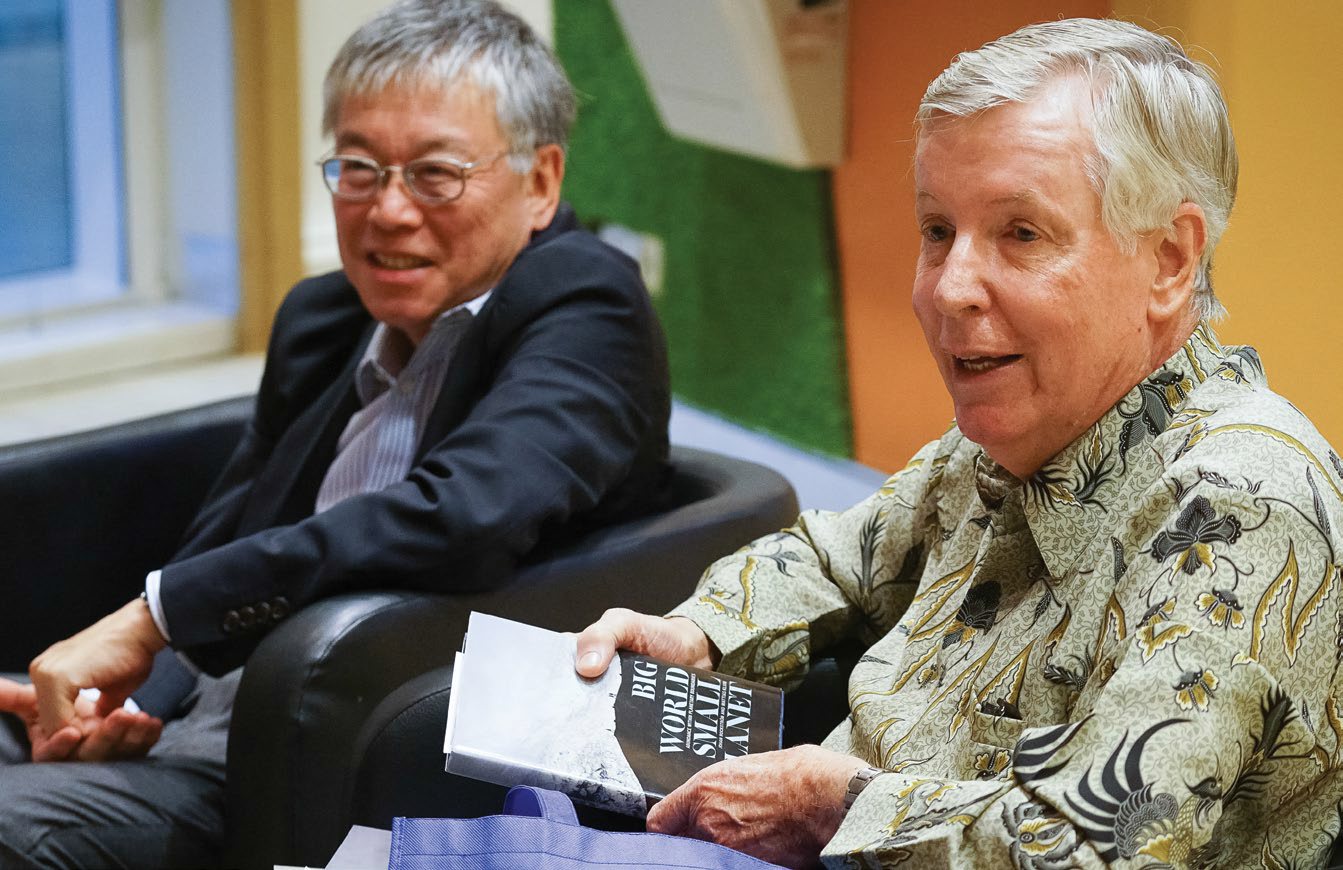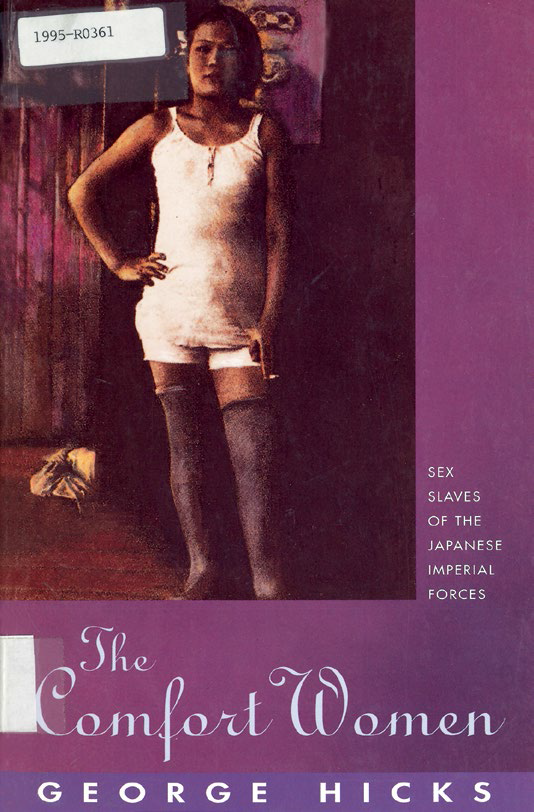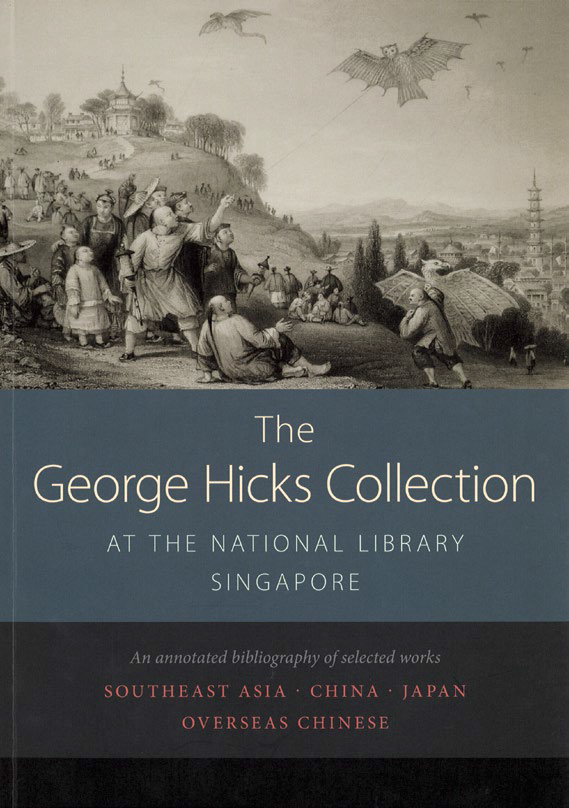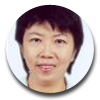The George Hicks Collection
This valuable collection at the National Library is significant for a number of reasons. Eunice Low explains why.
 George Hicks sharing with the audience highlights from the book, The George Hicks Collection at the National Library Singapore: An Annotated Bibliography of Selected Works, published and launched by the National Library on 2 March 2016. Looking on is John Koh, a board member of the National Library Board.
George Hicks sharing with the audience highlights from the book, The George Hicks Collection at the National Library Singapore: An Annotated Bibliography of Selected Works, published and launched by the National Library on 2 March 2016. Looking on is John Koh, a board member of the National Library Board.In order to appreciate the unique value and richness of the George Hicks Collection, one has to understand how these books and materials are interwoven with the personal experiences of their donor, George Lyndon Hicks. Donated to the National Library of Singapore in 2009 and 2013, the collection comprises nearly 7,000 items on China, Japan and Southeast Asia. Covering the main disciplines of social sciences and history, the bulk of the collection is made up of titles on sociology, economic history, political science, culture and customs.
Significance of the Collection
Taken as a whole, the George Hicks Collection represents the personal convictions and philosophies of its donor, who has contributed both academically and philanthropically to advance causes that are close to his heart. The pursuit of truth and moral progress in often controversial and confrontational arenas has been the main raison d’être of his writings and contributions. The collection is all the more relevant today as issues such as violence, racial and sexual discrimination, the stifling of democracy and the concept of moral progress continue to be played out in increasing measures on the regional and world stages.
Two broad themes have captured Hicks’ imagination and attention: the interaction between East and West – especially in the exchange and transfer of cultural, economic and socio-political knowledge – highlighted in the titles on China, and in particular, sinologist Joseph Needham’s books; and the Enlightenment ideals of enquiry, democracy, freedom and the rights of the individual.
Hicks himself is an accomplished writer. Looking to philosophers and thinkers such as Jean-Jacques Rousseau, Voltaire, Thomas Paine and Charles Darwin as guiding lights, Hicks has engaged the second theme with zeal and conviction, openly expressing his views on the handover of Hong Kong to China in various opinion pieces and editorials published in the International Herald Tribune, Asian Wall Street Journal and Far Eastern Economic Review.
Especially significant is his seminal work, The Comfort Women: Sex Slaves of the Japanese Imperial Forces (1995), a trailblazing book that exposed the plight of Asian women abducted and forced to work as sex workers by the Japanese military during World War II. As part of their research for the book, Hicks and his wife Julia travelled throughout Southeast Asia to interview former comfort women, and obtain first-hand accounts of their horrific ordeals. After disarming their initial suspicions, Julia, who is fluent in several languages, including many Chinese dialects and Malay, was able to earn the women’s trust and confidence. One key contact, a Malaysian woman, provided exceptionally detailed information on the location of the comfort stations and how they were organised, describing in vivid detail the interactions between the Japanese officers, doctors and the women.
 George Hicks’ seminal work, The Comfort Women: Sex Slaves of the Japanese Imperial Forces, highlights the plight of Asian women abducted and forced to work as sex workers by the Japanese military during World War II. All rights reserved, Hicks, G. (1995). The Comfort Women: Sex Slaves of the Japanese Imperial Forces. Singapore: Heinemann Asia.
George Hicks’ seminal work, The Comfort Women: Sex Slaves of the Japanese Imperial Forces, highlights the plight of Asian women abducted and forced to work as sex workers by the Japanese military during World War II. All rights reserved, Hicks, G. (1995). The Comfort Women: Sex Slaves of the Japanese Imperial Forces. Singapore: Heinemann Asia.Piecing together the interviews and translations of Japanese documents, The Comfort Women was almost certainly one of the earliest publications to contain in-depth primary source materials on the comfort stations and detailed interviews with the surviving women. More importantly, Hicks’ research helped to raise public consciousness of this sensitive subject and brought it to the attention of the world. Hicks recalls The Comfort Women as his most difficult work, because of the strength of the emotions behind it – the guilt and anguish in the anecdotes he heard, and anger at the Japanese government’s repeated denials.
Early Life
Born in Melbourne, Australia, on 13 November 1936, Hicks grew up with vivid memories of World War II, when piercing air raid sirens would puncture the silence of his kindergarten, in anticipation of Japanese bomb attacks. The post-war period was also the time when Hicks had his first encounter with non-Caucasians, when his mother took him to the city. There he saw rowdy scenes of American servicemen on time-off, mainly African-Americans who were stationed in Australia when the war began. He began to see Australia as “white and terrifyingly isolated”, and incidents like these began to stir within him an interest in world affairs.
Hicks enjoyed reading the news, and when he started attending college and subsequently the University of Melbourne, he developed an enduring interest in Asian studies, inspired by like-minded academics such as William MacMahon Ball and James Mackie. In 1959, Hicks joined the Immigration Reform Group, led by economics professor Kenneth Rivett, which produced a pamphlet in 1960 titled Control or Colour Bar? questioning the “White Australia” policy and calling for immigration reform. This pamphlet and the subsequent expanded publication Immigration: Control or Colour Bar? (1962) have been credited as the catalyst in the eventual abolishment of the policy by the Gough Whitlam government in 1972.
Upon graduation from the London School of Economics in 1963, Hicks first worked in Indonesia and then the Philippines, and lived briefly in Japan before settling in Hong Kong in 1975, where he pursued commercial interests in the chemical industry. In 1992, Hicks and Julia relocated to Singapore, where they currently reside.
In each of these countries, Hicks read prodigiously on their cultures, economies and history and began to acquire titles from various sources, including local publishers and booksellers. In Indonesia, he was fortunate to acquire large volumes of annual reports of Dutch companies established during the colonial period, which were hastily left behind when these companies pulled out from the newly independent nation from 1945 onwards. These publications have since been donated to the Lembaga Ilmu Pengetahuan Indonesia (Indonesian Institute of Sciences) library in Jakarta.
Donations to the National Library
The National Library of Singapore is a major beneficiary of the titles acquired by Hicks on Southeast Asia, China and Japan through two separate donations: the first batch in 2009 comprising about 3,000 titles, and the second in 2013 consisting of another 4,000 titles. Rare and unique additions to the collection include William Thorn’s Memoir of the Conquest of Java (1815); Atlas to Lord Macartney’s Embassy to China (1796); Joseph Needham’s proof copy of Heavenly Clockwork (1959); Simon de la Loubère’s detailed observations of Siam in A New Historical Relation of the Kingdom of Siam (1693); Isaac Commelin’s compilation of travel accounts in the East Indies in the two-volume Begin Ende Voortgangh, Van de Vereenighde Nederlantsche Geoctroyeerde Oost-Indische Compagnie (The Beginning and Ending of the Dutch East India Company) (1646); and Peking the Beautiful (1927) by Herbert C. White, a compilation of 70 coloured and monochrome photographic plates of important monuments in the Chinese capital accompanied by detailed descriptions.
In honour of the donations, The George Hicks Collection at the National Library Singapore: An Annotated Bibliography of Selected Works was published and launched on 2 March 2016. The bibliography provides an overview of the life and career of George Hicks, including his philanthropic contributions and a list of his edited and authored works. The titles in the collection are broadly structured by geographical regions, namely, Southeast Asia and East Asia (China and Japan). The last section on Overseas Chinese highlights the interconnectivity between Southeast Asia, East Asia and the West. Each section comprises a short introduction, followed by highlights and selected annotations of representative titles.
 The annotated bibliography is broadly structured into four themes: Southeast Asia, China, Japan and Overseas Chinese.
The annotated bibliography is broadly structured into four themes: Southeast Asia, China, Japan and Overseas Chinese.It is hoped that the George Hicks Collection will inspire the pursuit of knowledge and encourage readers, writers and scholars to reflect and further research the themes that have defined some of the modern narratives in Southeast and East Asian history.
Items in the collection are available upon request at the Information Counter on level 11 of the Lee Kong Chian Reference Library, National Library Building. The publication, The George Hicks Collection at the National Library Singapore: An Annotated Bibliography of Selected Works, is available for reference and loan (Call nos.: RSING 016.95 LOW-[LIB] and SING 016.95 LOW).
 Eunice Low is an independent researcher who has worked in the library and information services sector for over 15 years. Eunice has researched and written on a broad range of subjects, including the social sciences, government information and natural history. She wrote and compiled The George Hicks Collection at the National Library Singapore: An Annotated Bibliography of Selected Works.
Eunice Low is an independent researcher who has worked in the library and information services sector for over 15 years. Eunice has researched and written on a broad range of subjects, including the social sciences, government information and natural history. She wrote and compiled The George Hicks Collection at the National Library Singapore: An Annotated Bibliography of Selected Works.

